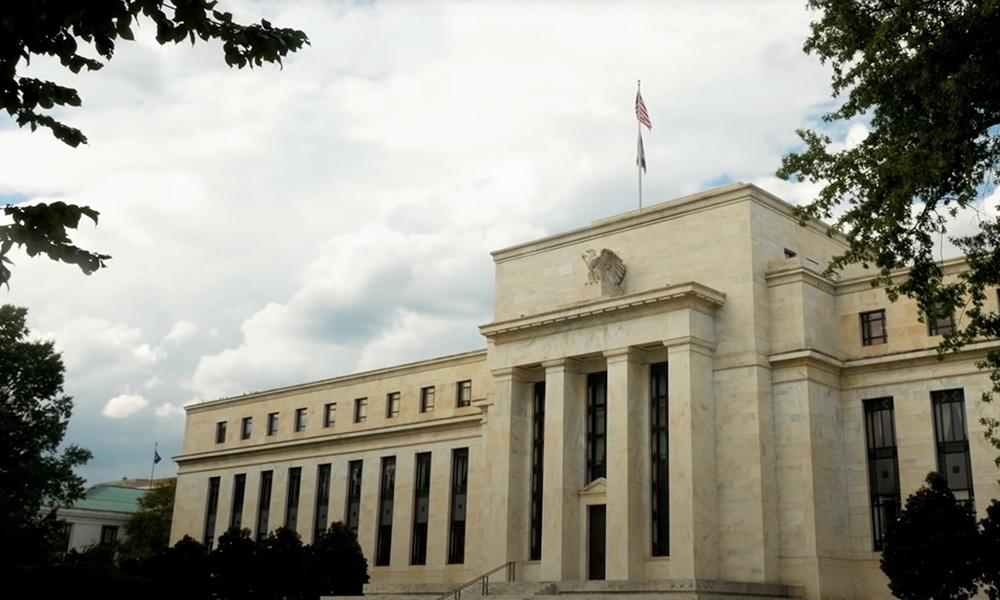Will the Federal Reserve cut interest rates within two weeks? With inflation data skewed, who will clear the fog surrounding long-term interest rates?
2025-10-21 21:57:51

The shift in interest rate cut forecasts: the logic from “one” to “two”
Just a month ago, economists expected just one more rate cut this year, but the new forecasts come as Fed policymakers have recently shifted their expectations toward further rate cuts.
Fed policy priorities: addressing labor market weakness
Caught between the twin risks of tariffs pushing up already high inflation and further weakening the labor market, the Federal Reserve appears to have prioritized the latter, prompting it last month to implement its first quarter-point interest rate cut since December.
Details of the October and December rate cut forecasts: majority support but differences exist
Of the 117 economists surveyed, only two disagreed, with the remaining 115 predicting the Fed will cut interest rates by another 25 basis points on October 29th, bringing the range to 3.75%-4.00%. Another two predicted a 25 basis point cut in October and a 50 basis point cut in December. As for whether there will be another rate cut in December, the majority dropped to 71%. The survey was conducted from October 15th to 21st.
Markets and FOMC Attitude: Traders More Confident, Officials Focus on Job Market
Financial market traders are more confident and have fully priced in two more rate cuts this year in interest rate futures contracts. Several Federal Open Market Committee (FOMC) members, including Fed Chairman Jerome Powell, have stated that they will continue to focus on the job market.
Disagreement within the FOMC: The trade-off between employment and inflation
Ryan Wang, US economist at HSBC, noted: "It's fair to say that about half of the current Federal Open Market Committee (FOMC) members are more focused on the labor market, while the other half are focused on inflation risks." "The dilemma facing the Fed is whether the current employment slowdown primarily reflects a decline in labor demand or a labor supply issue. It's difficult to accurately determine which factor has a greater impact, and this is crucial for how monetary policy should respond."
Employment and inflation data forecast: unemployment rate stabilizes, inflation is expected to rise slightly in the short term
The median forecast in the survey indicates that the unemployment rate will average around its current level of 4.3% annually through 2027, largely unchanged from last month's forecast. The latest survey indicates that the Federal Reserve's inflation target, as measured by personal consumption expenditures (PCE), is 2%, and that inflation is expected to average above 2% annually through 2027. Delayed official data, originally scheduled for release on October 24, is expected to show consumer inflation rising to 3.1% last month from 2.9% in August.
It is worth noting that during the US government shutdown, the twisted inflation data has caused the 10-year US Treasury yield to remain in a downward channel, as if the market's bet on the Fed's interest rate cut has not ended at all, while the US dollar index is strengthening.
External pressure: Trump continues to pressure for a sharp interest rate cut
For months, U.S. President Donald Trump has been pressuring Powell to deliver significant rate cuts. "The risk is that there could be more rate cuts next year," said Brett Ryan, senior U.S. economist at Deutsche Bank. "The risk of a loss of the Fed's independence has increased compared to any previous administration."
Summarize:
The current policy path of the Federal Reserve is characterized by "clarity in the short term and ambiguity in the long term": the short-term market and most economists have reached a consensus on "two more 25 basis point cuts this year", and an October interest rate cut is almost a foregone conclusion. Although the probability of a December interest rate cut has slightly decreased, it is still a high-probability event. This expectation has also been reflected in the pricing of interest rate futures.
However, policy uncertainty persists over the medium to long term: on the one hand, there are significant differences within the FOMC regarding the priorities of "labor market weakness" and "inflation risks." Furthermore, the government shutdown has delayed key economic data, making it more difficult for the Fed to assess the "demand vs. supply" logic behind the employment slowdown.
For the financial market, in the short term, it is necessary to focus on the delayed inflation data released on October 24 and the speeches of Federal Reserve officials to verify the logic of interest rate cuts; in the medium and long term, it is necessary to track the resilience of the job market, inflation trends and changes in the Federal Reserve leadership. These factors will jointly determine the subsequent turning points of interest rate policy, and thus affect the pricing logic of the US dollar, Treasury bonds and foreign exchange markets.
- Risk Warning and Disclaimer
- The market involves risk, and trading may not be suitable for all investors. This article is for reference only and does not constitute personal investment advice, nor does it take into account certain users’ specific investment objectives, financial situation, or other needs. Any investment decisions made based on this information are at your own risk.





















